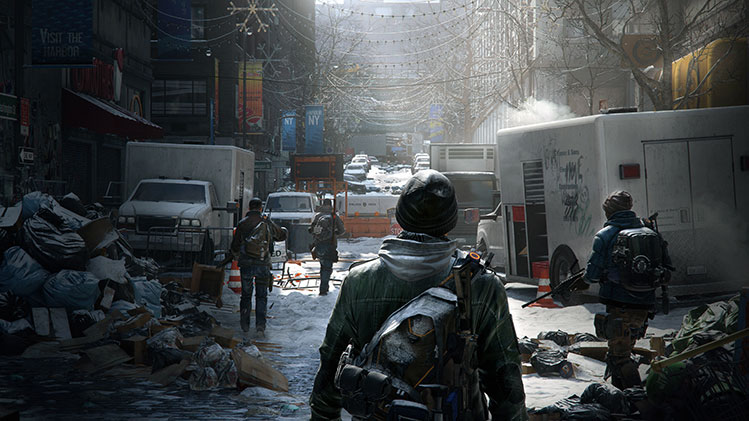Games have long relied on the narrative of heroic struggle against overwhelming odds to support their most popular mechanic: shooting men and collecting loot. Whether the villain is an evil wizard bent on world domination, hordes of inhuman zombies, or just brown-skinned soldiers, they all represent interchangeable ciphers ready to provide the player’s character justification to commit mass murder.
The ways in which each narrative is flavored, however, can differ significantly and in notable ways. Two games that share a similar premise while harboring distinct themes are IO Interactive’s Freedom Fighters (2003) and Ubisoft’s The Division (2016). Both take place in a hostile, anarchic, New York City. In Freedom Fighters it’s because – as in the film it liberally borrows from, Red Dawn (1984) – the Soviet army has invaded and occupied the city. In The Division, the source of strife is internally derived; sparked by a domestic biological terror attack, the city has fallen into disarray and various gangs have taken over. Both games involve “taking back the city” in some form or another.
Each game draws from a distinct historical setting which serves to both cohere and separate them. Freedom Fighter’s urtext, Red Dawn,was a film firmly couched in Cold War paranoia. It was based on the idea that apocalypse – brought on by two nations with massive armies and huge nuclear armaments battling for hegemony – was just around the corner. The Division taps into a more current fear, which also happens to be the undercurrent of many of Tom Clancy’s other properties: that the enemy is not governments but individuals with their own motivations. The fear is still death and chaos, the unknowable and unpredictable end of civilized society, but the object of that fear has changed shape. And in response to that shifting cipher, the player is given control of two very different kinds of heroes. …continue reading on Ontological Geek

